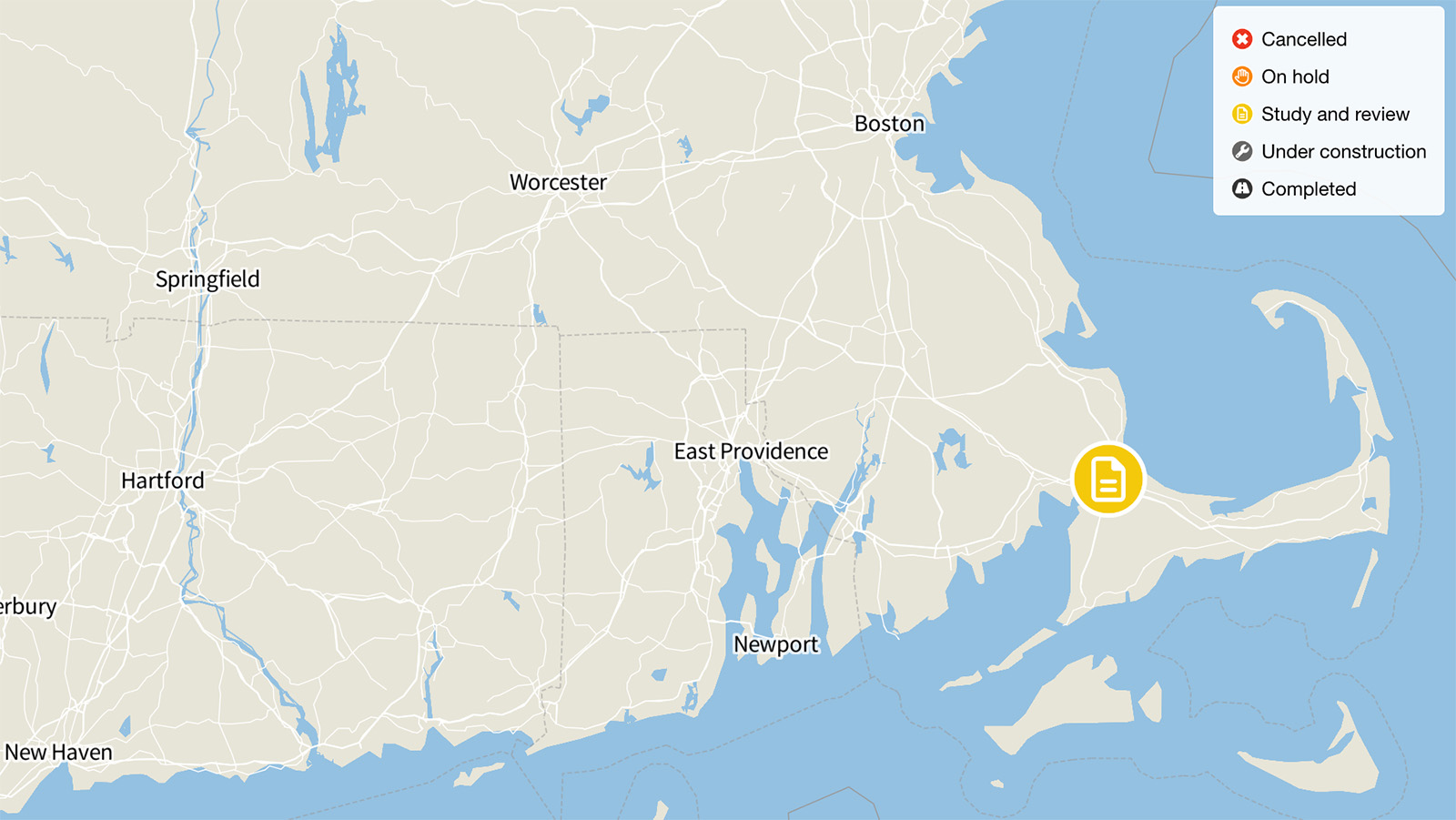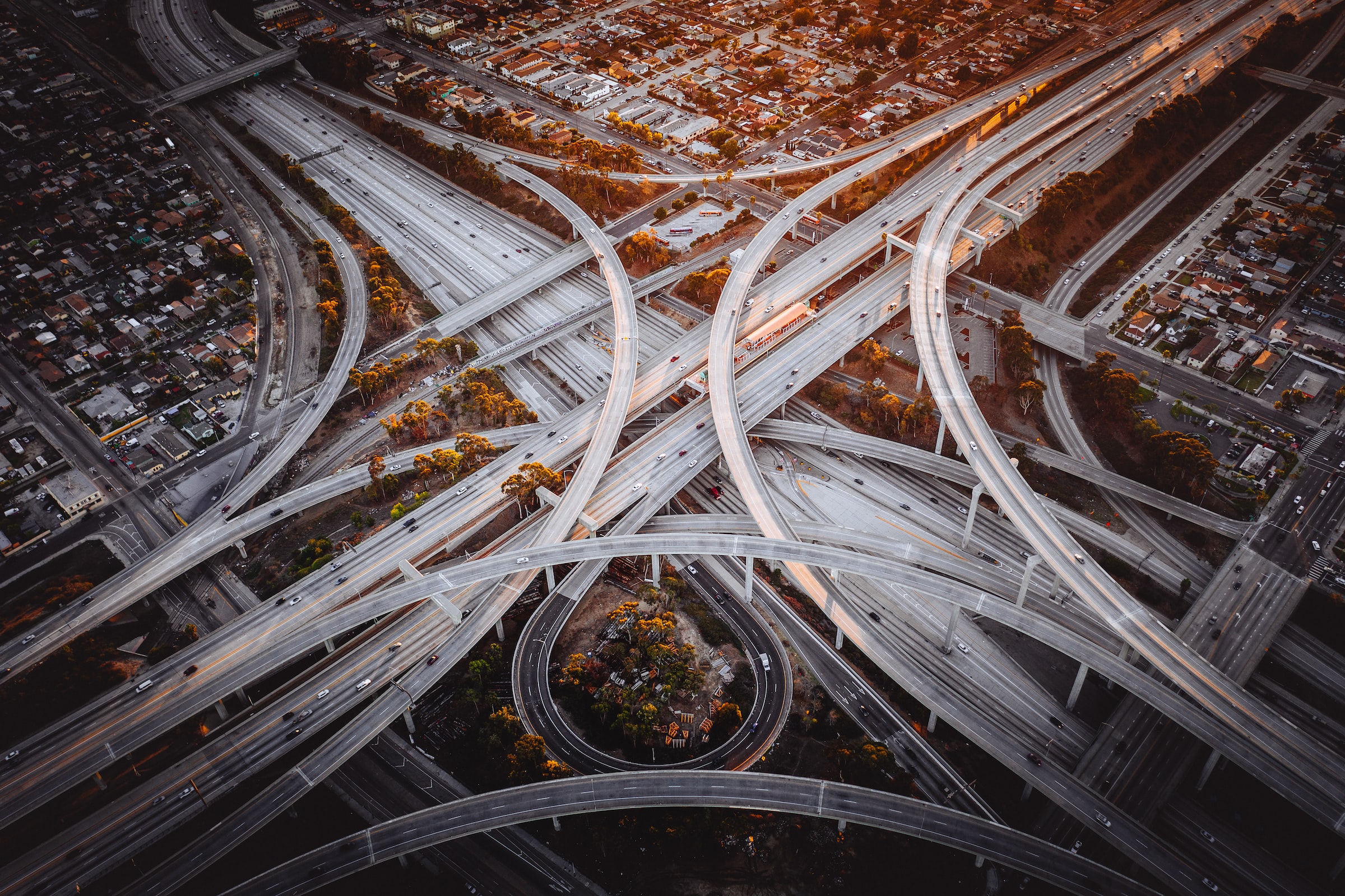
Illinois State Route 53/120
Illinois State Route 53 travels north-to-south across Chicago’s western suburbs. Northwest of the city, an expressway portion of Route 53 ends at the border between Cook County (home to Chicago) and suburban Lake County. For decades, local, county and state officials have considered extending Route 53 northward along a new right-of-way, where it would branch east-to-west as a bypass of existing Route 120, paving over open space from Interstate 94 to rural lake communities.
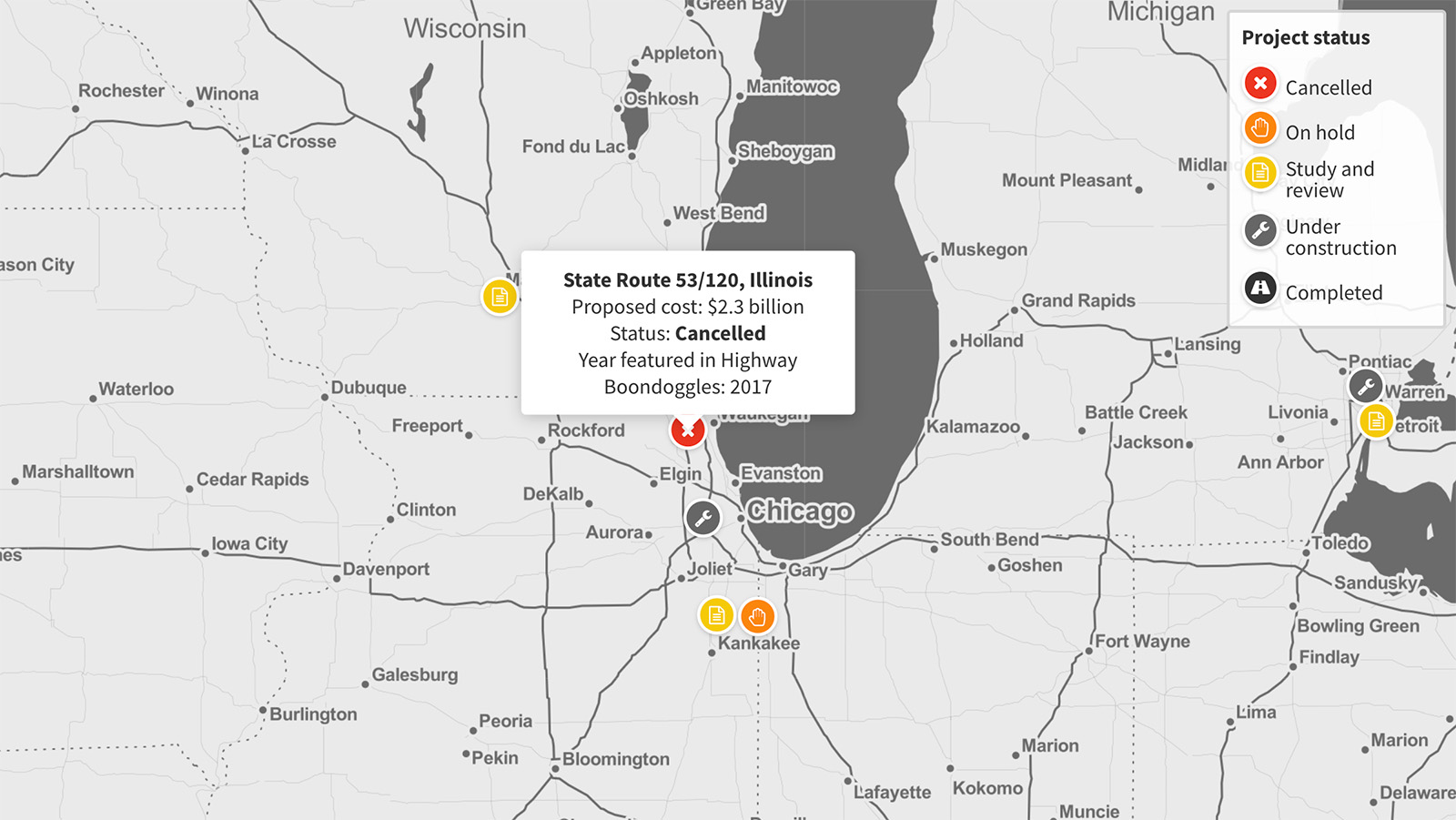
Status: Canceled
Originally reported cost: $2.3 billion to $2.65 billion
Update for current status:
As of June 2022, the Illinois State Route 53/120 project has been canceled.
Update from Highway Boondoggles 4, 2018:
An extension of Route 53 in Lake County has been under consideration since 1993 and has recently been revived. The proposed 25-mile extension is estimated to cost between $2.3 billion and $2.6 billion, and officials have suggested paying for it with a suite of funding options, including tolling, congestion pricing, and a 4-cent county-wide gas tax. However, even with those funding options, a funding gap of $1.3 billion to $1.9 billion has been predicted. Meanwhile, local opponents of the project have argued that the road would accelerate suburban sprawl and result in more traffic on local roads.
Despite widespread opposition to the project, the Illinois State Toll Highway Authority has continued momentum toward building the project. In May 2017, the Illinois Toll Highway Authority Board approved $25 million for an environmental impact study (EIS), which will be completed in the next three to five years.
Original story from Highway Boondoggles 3, 2017:
Illinois State Route 53 travels north-to-south across Chicago’s western suburbs. Northwest of the city, an expressway portion of Route 53 ends at the border between Cook County (home to Chicago) and suburban Lake County. For decades, local, county and state officials have considered extending Route 53 northward along a new right-of-way, where it would branch east-to-west as a bypass of existing Route 120, paving over open space from Interstate 94 to rural lake communities.
In 1993, the Illinois Legislature authorized the Illinois State Toll Highway Authority to build the 23-mile highway as a toll road – a measure that touched off heated debate within the county. Proponents argued that existing and anticipated traffic congestion in Lake County required action; opponents argued that the road would accelerate urban sprawl and result in more traffic on local roads. The plan was eventually shelved.
In 2006, Lake County officials initiated new conversations about the proposal. A 2009 non-binding referendum in Lake County saw 76 percent of voters express support for the concept of extending Route 53, though the referendum did not specify how the road would be paid for. The Toll Highway Authority and the Chicago Metropolitan Agency for Planning (CMAP) both added the highway to their transportation plans.
In an effort to surmount the controversy around the project, the Illinois State Toll Highway Authority convened a Blue Ribbon Advisory Council (BRAC) to recommend how best to proceed. In 2012, the BRAC accounted for the first time for the environmental damage the extension would inflict, recommending the construction of a “modern boulevard” with a number of environmental features and integration into comprehensive plans for multi-modal mobility and future development in the area.
The proposed roadway had several novel features. It was to be designed as a tolled, four-lane, limited access highway, but with a maximum speed of 45 miles an hour, with tolls varied based on congestion levels.
A feasibility analysis produced in 2015 identified several possible sources of funding:
- A value capture mechanism that would direct one-quarter of the additional real estate tax revenue from non-residential development in the corridor to a “Sustainable Transportation Fund” that would support environmental impact mitigation;
- An additional four cents per gallon county gas tax, charged to drivers throughout the county, half of which would be used to fund the highway;
- Tolling and congestion pricing along the Route 53/120 corridor; and,
- Funding from increased tolls charged elsewhere in the county.
Several of these options, however, come with great uncertainty. Dependence on tolling and value from property taxation would create incentives to maximize traffic and commercial development in the area – that is, to encourage further sprawl and automobile dependence. Some of the funding mechanisms would require legislative approval. Moreover, toll revenue, which is always difficult to forecast, is made especially uncertain given the road’s relatively low speed limit and high (proposed 20 cents per mile) toll rates, compared to the 6 cents per mile average for the rest of Illinois’ toll roads. Even with this package of funding options, the feasibility study identified a considerable “funding gap” of $1.36 billion to $1.91 billion, which the study recommended come from tolls on other segments of the Illinois Tollway system, as well as state and federal funding.
The Illinois State Toll Highway Authority has continued momentum toward building the project, voting to allocate $10 million in late 2016 toward the $50 million, four-year process for developing an environmental impact statement for the project. But concerns about the project’s costs and impacts, and rising local opposition, threaten its continuation. Local residents concerned about the project’s costs and environmental impacts have pushed local officials and organizations to reverse their prior support for the project and the Toll Highway Authority to abandon it.
In mid-2016, Lake County Board Chairman Aaron Lawlor, who co-chaired the BRAC, reversed course and urged that plans for the highway be scrapped, stating that it has become clear that “the financial and political realities have become insurmountable.” Lawlor called instead for a new vision for the corridor – where the Illinois Department of Transportation had been acquiring land for highway right-of-way for decades – that would include a trail system, coupled with other road and transit improvements throughout the county.

Topics
Find Out More

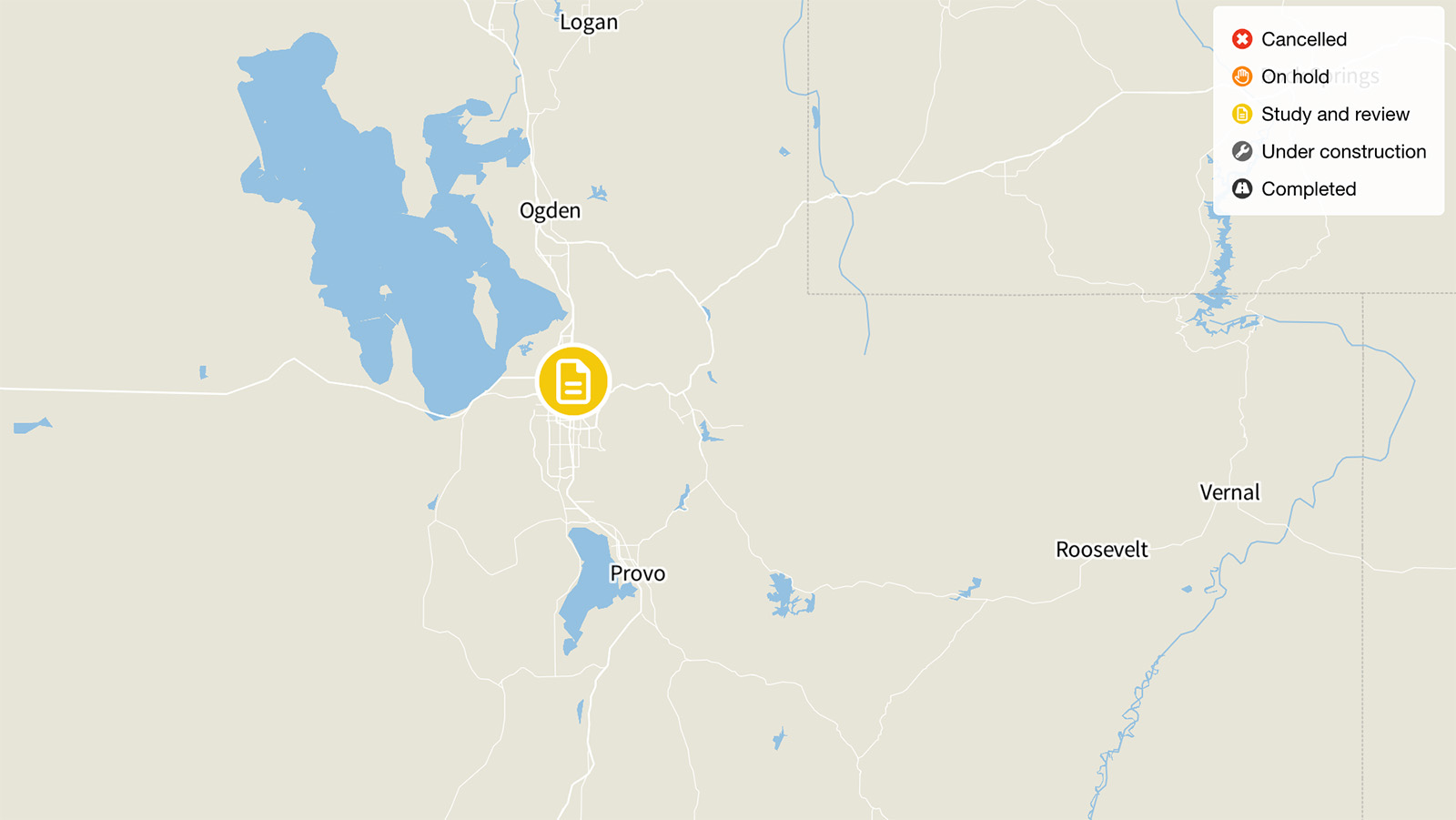
I-15 Expansion, Salt Lake City
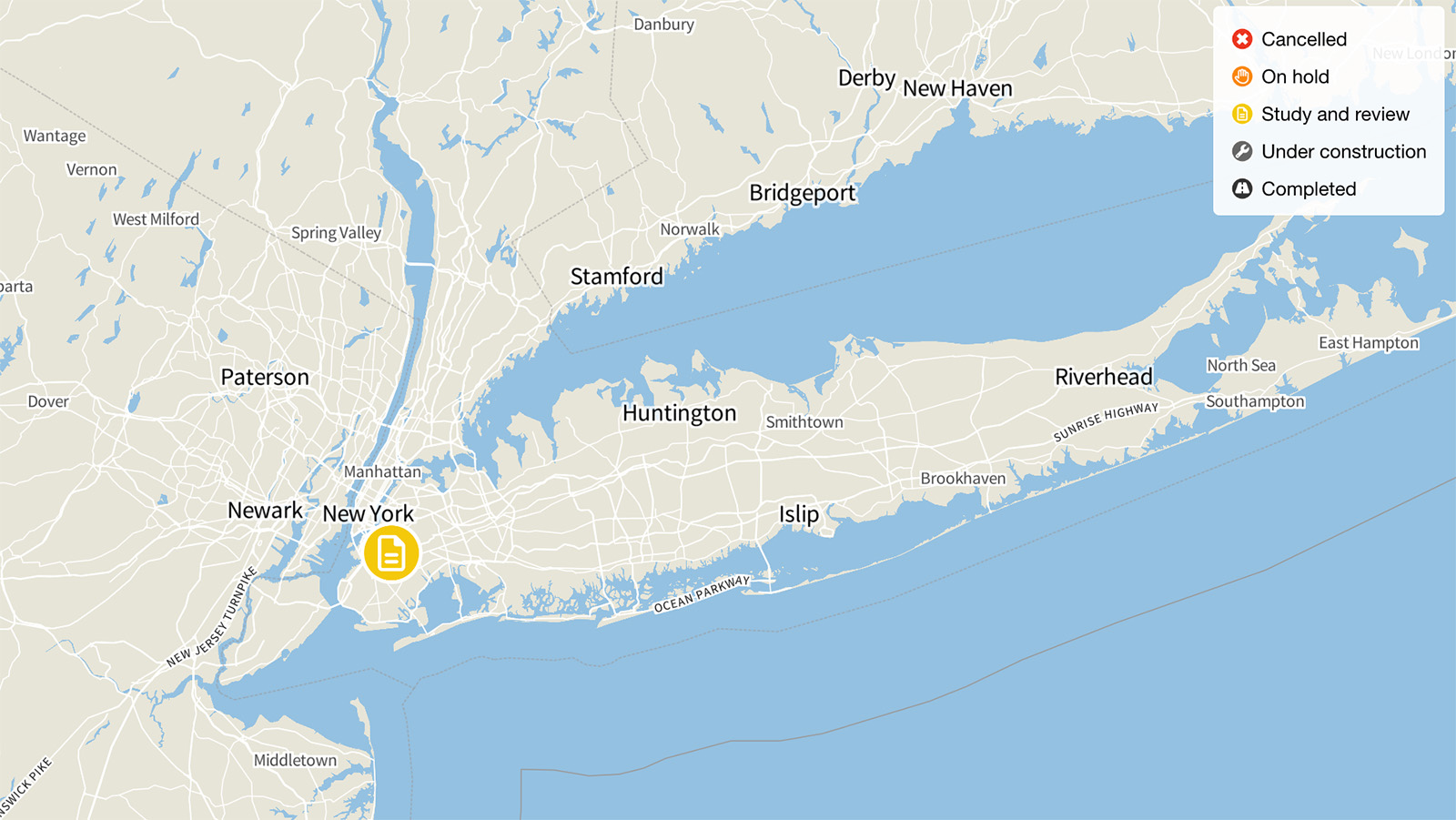
The Brooklyn-Queens Expressway, New York
